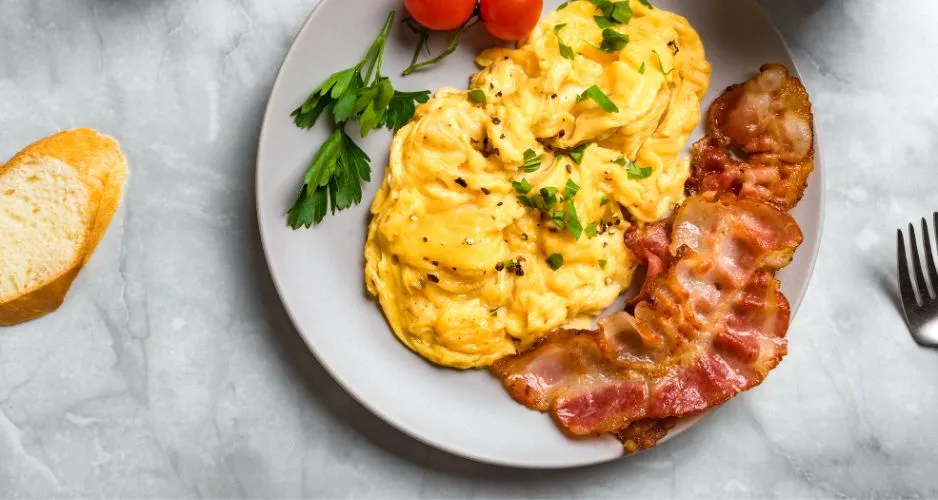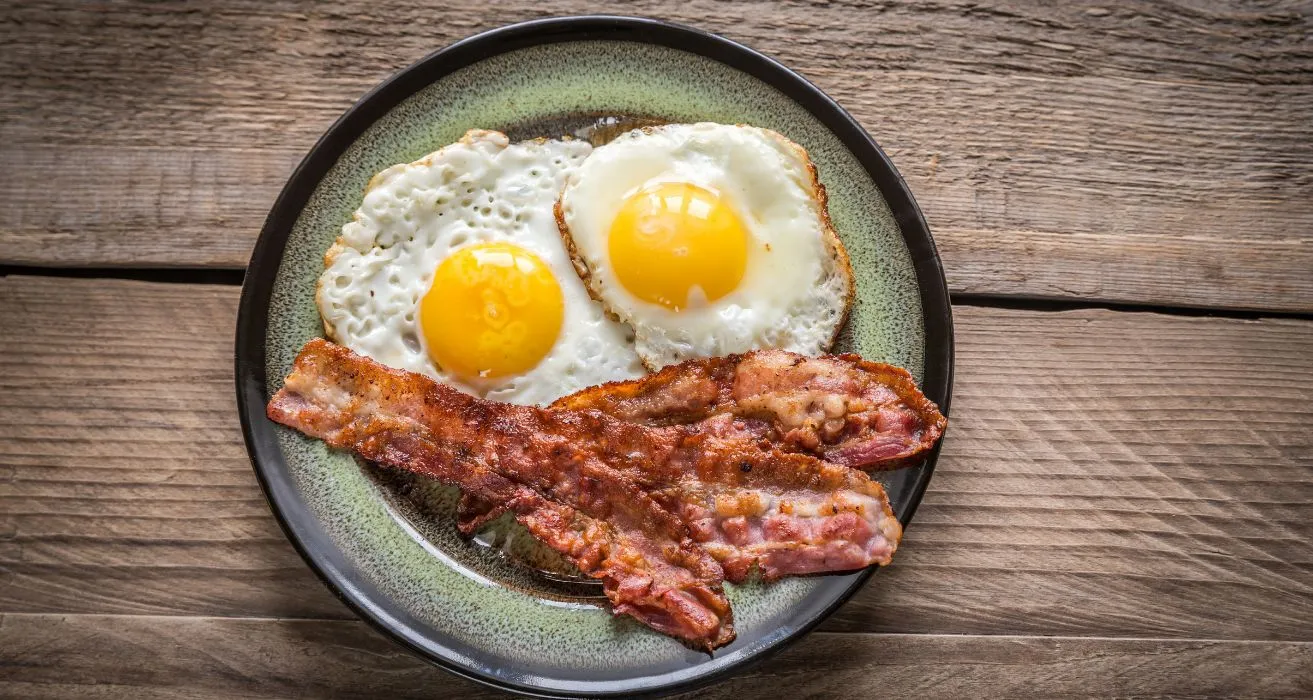In the culinary world, the quest for healthier alternatives to traditional favorites is never-ending. Among these, turkey bacon stands out as a popular choice for those looking to maintain the savory delight of bacon while cutting down on fat and calories. This comprehensive guide dives into the nuances of how to cook turkey bacon, offering a variety of methods to achieve that perfect crispiness or chewiness, depending on your preference. From oven-baked delights to skillet-cooked crispiness, we’ll explore the best ways to prepare turkey bacon, ensuring every bite is as satisfying as its pork counterpart. So, let’s embark on this flavorful journey together, transforming the way you think about and cook turkey bacon.
Introduction to Turkey Bacon
Turkey bacon has carved out its niche in the breakfast world, offering a leaner alternative to traditional pork bacon. Its unique taste and texture have made it a staple in many households, but the question remains: how can one cook turkey bacon to perfection?
Selecting the Best Turkey Bacon
When it comes to turkey bacon, not all are created equal. Look for options that boast minimal processing and natural ingredients. This choice ensures a healthier and tastier outcome. Remember, the quality of your bacon can significantly influence the dish’s final taste.
Overview of Turkey Bacon Benefits
Turkey bacon isn’t just about cutting calories; it’s a versatile ingredient that complements various dishes. From BLTs to salads, its smoky flavor enhances every bite. Moreover, its lower fat content doesn’t mean you’re sacrificing taste for nutrition. In fact, when cooked correctly, turkey bacon can achieve a delightful crispiness that rivals its pork counterpart.
Comparison with Traditional Bacon
While turkey bacon and traditional bacon differ in taste and texture, each has its place in the culinary world. Turkey bacon offers a lighter, slightly sweeter taste and a different nutritional profile, making it an excellent choice for those monitoring their dietary intake. However, understanding how to cook it properly is key to enjoying its unique flavor.
In the next sections, we’ll delve into various cooking methods, ensuring you can enjoy turkey bacon’s deliciousness, whether you prefer it crispy, chewy, or glazed. Stay tuned as we explore the art of cooking turkey bacon, transforming simple ingredients into a mouthwatering experience.
Preparing Turkey Bacon
Before diving into the cooking process, selecting high-quality turkey bacon and understanding the necessary preparations are crucial. This section will guide you through choosing the best turkey bacon and the tools and ingredients you’ll need to cook it to perfection.
Selecting the Best Turkey Bacon
When browsing the aisles for turkey bacon, opt for brands that prioritize natural ingredients and minimal processing. These choices often yield a more flavorful and healthier product. Look for labels that indicate lower sodium content and no added preservatives, as these factors contribute to a better-tasting bacon.
Required Tools and Ingredients
To cook turkey bacon, you’ll need a few basic kitchen tools and some simple ingredients to enhance its flavor. Here’s what you should gather before you start cooking:
- A baking sheet or skillet
- Aluminum foil or parchment paper (for oven methods)
- Paper towels (for microwave or absorbing excess grease)
- Tongs for flipping
- Optional: Maple syrup, brown sugar, and pepper (for glazing)
Crispy Turkey Bacon in the Oven
Ingredients:
- Turkey bacon strips
- Aluminum foil
- Optional: Black pepper for seasoning
Directions:
- Preheat your oven to 400 degrees Fahrenheit.
- Line a baking sheet with aluminum foil for easy cleanup.
- Arrange the turkey bacon strips on the baking sheet without overlapping.
- Bake for 10-15 minutes, or until the edges start to brown and crisp up.
- Flip the strips halfway through for even crispiness.
- Remove from the oven and place on paper towels to drain any excess grease.
Microwave Method for Chewy Texture
Ingredients:
- Turkey bacon strips
- Paper towels
Directions:
- Line a microwave-safe plate with paper towels.
- Lay the turkey bacon strips on the paper towels in a single layer.
- Cover with another paper towel to prevent splattering.
- Microwave on high for about 1 minute per slice, checking for doneness.
- Let it stand for a minute before serving to allow the bacon to firm up.
Glazed Turkey Bacon in the Oven
Ingredients:
- Turkey bacon strips
- ¼ cup light brown sugar
- 3 tablespoons maple syrup
- Freshly ground pepper
Directions:
- Preheat your oven to 375 degrees Fahrenheit and line a baking sheet with parchment paper.
- Arrange the turkey bacon strips in a single layer on the baking sheet.
- In a small bowl, mix the brown sugar and maple syrup until combined.
- Brush the mixture over the turkey bacon strips and sprinkle with pepper.
- Bake for 20-25 minutes, or until caramelized and crispy.
- Remove from the oven and let cool on a wire rack for a crispy finish.
Cooking turkey bacon is a simple process that can yield delicious results, whether you’re looking for a crispy, chewy, or glazed finish. By following these steps and using the right ingredients, you can enjoy a healthier alternative to traditional bacon that doesn’t skimp on flavor. Stay tuned for more tips and tricks on enhancing your turkey bacon experience in the following sections.
Cooking Methods
Now that we’ve covered the basics of preparing turkey bacon, let’s dive into the various cooking methods that can help you achieve the perfect texture and flavor. Whether you prefer your turkey bacon crispy, chewy, or glazed, there’s a technique for everyone.

Crispy Turkey Bacon in the Oven
For those who love their bacon with a bit of crunch, the oven method is your best bet. It’s straightforward and allows for even cooking.
Directions:
- Preheat your oven to 400°F (200°C).
- Line a baking sheet with aluminum foil for easy cleanup.
- Place turkey bacon strips on the sheet, ensuring they don’t overlap.
- Bake for 15-20 minutes, checking halfway through to flip the strips.
- Once crispy, transfer to a paper towel-lined plate to absorb excess grease.
This method ensures your turkey bacon is evenly crispy and delicious.
Microwave Method for Chewy Texture
If you’re short on time or prefer a softer, chewier texture, the microwave is your friend.
Directions:
- Line a microwave-safe plate with paper towels.
- Arrange the bacon strips on the plate without overlapping.
- Cover with another paper towel to catch any grease splatters.
- Microwave on high for 3-4 minutes, or until cooked to your liking.
- Let it cool for a minute before serving.
This method is quick and convenient, perfect for busy mornings.
Glazed Turkey Bacon in the Oven
For a sweet and savory twist, try glazing your turkey bacon before baking.
Directions:
- Preheat your oven to 375°F (190°C).
- Mix ¼ cup of brown sugar and 3 tablespoons of maple syrup in a bowl.
- Lay turkey bacon strips on a parchment-lined baking sheet.
- Brush each strip with the glaze, then sprinkle with freshly ground pepper.
- Bake for 20-25 minutes, until the edges are crispy and the glaze is caramelized.
- Transfer to a wire rack to cool and crisp up further.
This method adds a deliciously sweet layer of flavor to your turkey bacon.
Traditional Skillet Cooking
For those who prefer the traditional method, cooking turkey bacon in a skillet is a great option.
Directions:
- Heat a non-stick skillet over medium heat.
- Add turkey bacon strips to the skillet in a single layer.
- Cook for 2-3 minutes on each side, or until desired crispiness is achieved.
- Transfer to a paper towel-lined plate to drain excess grease.
This method gives you control over the crispiness of each strip and adds a nice sear.
Each of these methods offers a unique way to enjoy turkey bacon, catering to different textures and flavors. Experiment with each to find your favorite way to prepare this versatile ingredient. Next, we’ll explore some frequently asked questions about turkey bacon, shedding light on common queries and providing useful tips for your culinary adventures.
FAQs on Cooking Turkey Bacon
Turkey bacon, with its unique taste and healthier profile, often brings up a slew of questions about its preparation, storage, and nutritional benefits. Let’s tackle some of the most frequently asked questions to demystify the process of cooking turkey bacon to perfection.
Does Turkey Bacon Taste Like Regular Bacon?
Turkey bacon offers a different culinary experience. While it doesn’t mimic the exact taste of pork bacon, it brings its own smoky, slightly sweet flavor to the table. Proper cooking techniques can make it just as satisfying, especially for those looking for a leaner option.
Can Turkey Bacon Become as Crispy as Regular Bacon?
Absolutely! The key to achieving that beloved crispiness lies in the cooking method. Baking turkey bacon in the oven, particularly when placed on a wire rack, allows air to circulate around the bacon, ensuring it crisps up beautifully. Flipping the bacon halfway through the cooking time also contributes to an even crisp.
Is Turkey Bacon Pre-Cooked?
Most turkey bacon is partially cooked during the manufacturing process, which helps shorten the cooking time at home. However, it’s important to read the package instructions carefully, as some brands may require full cooking to ensure safety and optimal texture.
How to Store Turkey Bacon Properly?
Unopened turkey bacon should be stored in the refrigerator and used by the date on the package. Once opened, wrap it tightly in plastic wrap or a zip-top bag and use it within a week. For longer storage, turkey bacon can be frozen for up to six months.
Shelf Life of Cooked vs. Uncooked Turkey Bacon
Cooked turkey bacon can be stored in the refrigerator for up to 4 to 5 days. Make sure to keep it in an airtight container or tightly wrapped in aluminum foil or plastic wrap. Uncooked turkey bacon, on the other hand, will last in the fridge for about a week and in the freezer for up to six months.
How is turkey bacon supposed to be cooked?
Turkey bacon can be cooked in various ways, including frying in a skillet, baking in the oven, or even microwaving. For optimal texture and flavor, it’s recommended to cook it on medium heat in a skillet until it reaches a desired level of crispiness, usually about 2 to 3 minutes per side. When baking, laying the slices on a baking sheet and cooking at 400°F (204°C) for about 15 to 20 minutes is effective, flipping halfway through.
Does turkey bacon cook differently than regular bacon?
Yes, turkey bacon does cook differently than pork bacon due to its lower fat content. It tends to cook faster and can become crispy with less cooking time. Additionally, because it’s leaner, there’s less shrinkage during cooking, and it may require a little added oil to prevent sticking and achieve a desirable texture.
What’s the best way to cook bacon at home?
The best way to cook bacon depends on personal preference and convenience. Frying in a skillet offers quick, crispy results, baking in the oven provides an even cook with less mess, and microwaving is the fastest method. For most, baking at 400°F (204°C) on a lined baking sheet provides a perfect balance of ease and evenly cooked, crispy bacon.
Is turkey bacon OK raw?
No, turkey bacon is not safe to eat raw. Like all poultry products, turkey bacon needs to be thoroughly cooked to an internal temperature of 165°F (74°C) to ensure that harmful bacteria are killed. Consuming raw or undercooked turkey bacon can increase the risk of foodborne illness.
Is turkey bacon actually healthy?
Turkey bacon can be a healthier alternative to traditional pork bacon, as it generally contains fewer calories and less fat. However, it’s still processed meat, so it can be high in sodium and preservatives. Moderation is key, and it should be part of a balanced diet.
Do you need oil to fry turkey bacon?
While turkey bacon has less fat than pork bacon, adding a small amount of oil to the pan can help prevent sticking and ensure even cooking. A light coating of cooking spray or a teaspoon of oil can make a significant difference in texture and prevent the turkey bacon from becoming too dry.
Is it better to fry or bake bacon?
Whether frying or baking bacon is better depends on your personal preference and cooking goals. Frying offers quick, crispy bacon with a rich flavor from the rendered fat, while baking provides a hands-off approach, less mess, and evenly cooked slices. Both methods have their merits, with baking being slightly healthier due to less grease.
How do you know turkey bacon is done?
Turkey bacon is done when it reaches an internal temperature of 165°F (74°C) and is well-browned and crispy to your liking. Unlike pork bacon, which may have a more obvious texture change when done, turkey bacon’s key indicator is its firmness and color change.
Do you need to cook fully cooked turkey bacon?
Fully cooked turkey bacon is designed to be eaten safely without further cooking. However, most people prefer to warm it or cook it lightly to improve its texture and flavor. A quick sauté in a pan or a brief heat in the microwave can enhance its crispiness and taste.
Can turkey bacon be a little pink?
Yes, turkey bacon can remain a little pink even when fully cooked, especially if it has been smoked or contains preservatives like sodium nitrite that can affect its color. The best way to ensure it’s cooked safely is to check that it has reached the correct internal temperature of 165°F (74°C).
By addressing these common questions, we hope to enhance your cooking experience and encourage you to incorporate turkey bacon into your meals more confidently. In the next section, we’ll share additional tips and tricks for maximizing the flavor and enjoyment of your turkey bacon dishes. Stay tuned for creative seasoning ideas, serving suggestions, and more insights to elevate your culinary creations.
Additional Tips and Tricks
Cooking turkey bacon to perfection is just the beginning. Enhancing its flavor and integrating it into your diet in creative ways can elevate your meals from good to gourmet. Here are some additional tips and tricks to get the most out of your turkey bacon.

Enhancing the Flavor of Turkey Bacon
Turkey bacon is a versatile ingredient that absorbs flavors well. Consider marinating it in a mixture of maple syrup and Dijon mustard before cooking for a sweet and tangy twist. Alternatively, a sprinkle of smoked paprika can add depth and mimic the smokiness of traditional bacon.
Creative Serving Suggestions
Turkey bacon isn’t just for breakfast. It can be a star ingredient in BLTs, crumbled over salads, or wrapped around asparagus for a savory side dish. For a healthier spin on classic dishes, try using turkey bacon in carbonara or quiche, adding protein without the heaviness of pork bacon.
Health Benefits and Nutritional Information
Opting for turkey bacon over pork bacon can be a healthier choice for those monitoring their fat and calorie intake. Turkey bacon generally contains fewer calories and less fat, making it a suitable option for weight management and heart health. However, it’s still important to consume it in moderation as part of a balanced diet.
Incorporating turkey bacon into your diet offers a compromise between satisfying your bacon cravings and maintaining a healthier eating plan. Its versatility and flavor make it a valuable ingredient in various recipes, proving that you don’t have to sacrifice taste for nutrition.
As we wrap up this guide on how to cook turkey bacon, remember that the key to great cooking lies in experimentation and personalization. Don’t be afraid to try new methods, play with flavors, and adjust cooking times to suit your taste preferences. Whether you’re aiming for crispy, chewy, or glazed turkey bacon, mastering these techniques will ensure delicious results every time. Happy cooking!
Conclusion:
Given the comprehensive nature of the guide provided, covering from selection to cooking methods, FAQs, and additional tips for turkey bacon, we’ve addressed the essential aspects to help readers master the art of cooking turkey bacon. This guide aimed to equip you with the knowledge to select, prepare, and cook turkey bacon in various ways, ensuring delicious outcomes regardless of your dietary preferences.
As we conclude, remember that cooking is as much about the journey as it is about the destination. The versatility of turkey bacon allows for creativity in the kitchen, encouraging you to experiment with flavors and techniques to find what best suits your palate. Whether incorporated into breakfast, lunch, or dinner, turkey bacon can elevate your meals, offering a healthier alternative without compromising on taste.
Thank you for following along this guide. We hope it inspires you to explore the delightful possibilities turkey bacon offers. Happy cooking, and may your meals be both nourishing and delicious.
